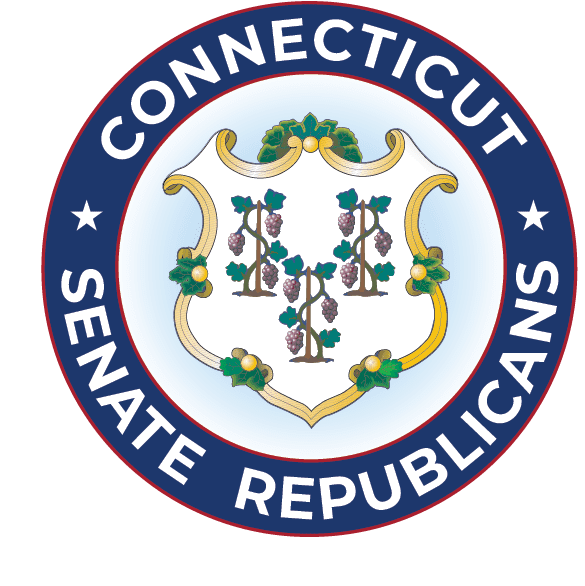State Senate Passes Bipartisan Two-Year State Budget
October 30, 2017The Connecticut State Senate on Oct. 26 delivered a historic, bipartisan vote on a state budget to close a projected $3.5 billion deficit over the next two years.
Sen. Tony Hwang’s remarks on the State Senate floor during the state budget debate can be viewed here: https://youtu.be/cWCo82WyXDA
The budget is the result of bipartisan negotiations and includes policies from both Democrats and Republicans.
The bipartisan budget includes the following:
Restores Education Funding, Implements New Funding Formula
This budget includes a new Education Cost Sharing Formula that takes into account factors regarding CCJEF and Meskill court decisions, enrollment, poverty, wealth and number of English Language Learners, among other factors. This budget averts the need for the devastating local education cuts contained in the governor’s executive order. It also creates a new formula to ensure education aid is directed proportionally to towns based on need. Wealthier towns with shrinking populations will see small decreases in aid and poorer towns with growing populations will see gradual increases in aid over time. For charter schools, per pupil grants are increased by $250 and funding is provided to allow for grade growth.
Provides Municipal Support and Mandate Relief
This budget provides predictable municipal aid so that towns and cities know what they can count on from the state. This plan averts the deep municipal cuts contained in the governor’s executive order, minimizes reductions in aid, and also does not shift teacher pension costs onto towns and cities thereby saving towns, cities, schools and taxpayers from shouldering another financial burden.
The budget also implements significant mandate relief for cities and towns to help municipalities achieve efficiencies, foster cooperation between school boards and local governments, and pass savings on to taxpayers.
The car tax cap is maintained but capped at 39 mills in year one and 45 mills in year two with the state reimbursing the difference for those towns will mill rates exceeding the caps.
Makes Targeted Spending Cuts
This budget makes targeted spending cuts, reductions to agency accounts, and rolls forward lapses made last year excluding cuts to core services. It also implements overtime savings of 10 percent and a hiring freeze on non-24-hour non-union positions. Manageable reductions were made to higher education institutions including a $134 million reduction to UConn and UConn health, while aid for scholarships for low- and middle-income students was preserved.
Protects Core Social Services
The bipartisan budget protects funding for core social services and programs that benefit people most in need. It fully funds day and employment services for individuals with intellectual and developmental disabilities. It also protects funding for mental health and substance abuse treatment programs.
Supports Seniors & Cuts Taxes on Retirees
Aging in place initiatives are protected by restoring funding for the CT Home Care Program and opening it to new participants, increasing funding for Seniors Meals and non ADA dial a ride, and preserving the personal needs allowance. The budget also lowers taxes for retirees by eliminating the tax on social security income and pension income for single filers with an AGI below $75,000 and joint filers below $100,000.
Stabilizes the State’s Transportation Fund
Connecticut needs a safe, modern transportation system to support public safety and economic growth throughout our state. Therefore, this budget implements a plan to stabilize the Special Transportation Fund by dedicating transportation-related revenues to fund transportation needs. Without this change, the STF is projected to be insolvent by 2021, which would put all transportation projects in jeopardy. This is a needed reform to ensure the STF remains solvent.
Includes Structural Changes
In addition to balancing the budget over the next two years, this budget includes policy changes that will shape the state’s future and put CT on healthier financial footing. These changes include an enforceable spending cap, bonding cap of $1.9 billion, municipal mandate relief, and additional policy changes for long term savings.
Tax Changes
This budget includes a cigarette tax increase, a fee of $0.25 on ride sharing services, and the scaling back of tax credits. It also includes hospital changes as agreed to by Connecticut hospitals to leverage more federal funding. The budget does not impose broad sales tax increases or income tax increases. It also provides tax relief by phasing out the tax on social security income and pension income for single filers with an AGI below $75,000 and joint filers below $100,000.
Supports our Capital City
This budget seeks to provide needed support to Hartford to prevent the city from declaring bankruptcy. It will implement new oversight of Hartford, offering $20 million in state aid through a new Municipal Accountability Review Board and $20 million in debt payments to support the city. Along with this funding will come increased oversight and requirements to reduce city expenses.
Crumbling Foundations
This budget provides critical aid to help homeowners impacted by crumbling foundations in eastern Connecticut. It establishes a special public benefit captive insurance not-for-profit company to manage funding and a transparent and open process to distribute this funding to assist homeowners.
Funds State Parks & Tourism
The budget implements the bipartisan “Passport to Parks” program dedicating a $10 biennial fee to fund parks and in exchange would allow free entrance to all state parks with a Connecticut license plate. This budget also acknowledges the multiplier effect that tourism has on our economy, and therefore creates a new Marketing, Culture and Tourism account beginning in FY 2019 funded with 1.5% of the current hotel occupancy tax, dedicating this portion of the current tax to stabilize tourism funding.
Budget Summary:
http://ctsenrepublic.wpengine.com/wp-content/uploads/2017/10/BudgetDetails_ForWebsite.pdf
